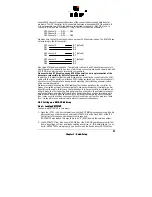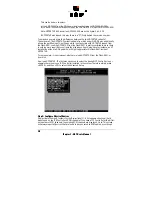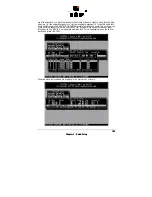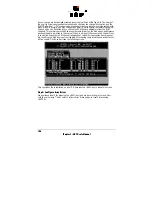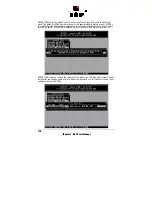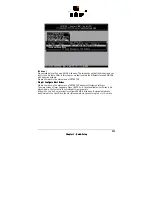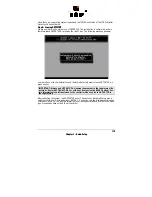
&KDSWHU&4XLFN6HWXS
4. Protocol
This can be either SCSI-II or SCSI-III.
If you select SCSI-III make sure, that your hard disk supports this protocol. Most new multi-
GB hard disks support SCSI-III. To enable Ultra (FAST-20) transfer rates (Narrow: 20 MB/s;
Wide: 40 MB/s), SCSI-III protocol is required.
5. Disk Read Cache / Disk Write Cache / Tagged Queues
If a drive supports particular SCSI features you enable them (On).
Note: Most of the modern drives support disk caching (read and write). Some do not sup-
port Tagged Queues.
Press <ESC> to leave the
Initialize Disk
menu.
GDTSETUP displays a warning on the destruction of all data. This implies two different
evaluations, according to the drive’s current state and the options you have selected:
1.
First Initialization of the SCSI Device.
In this case the warning must be taken seriously. If the drive was previously connected
to a different controller (e.g., NCR etc.) and still contains data, this data will be lost now.
2.
The SCSI Device was already initialized.
If only internal parameters, such as Disconnect, Synchronous Transfer and SCSI-II op-
tions have been changed, the data on the drive remains intact. Only the function state of
the device is changed.
Press <Y> and we are back on the main screen of level 1 and see that the initialization-state
of the SCSI device has changed.











